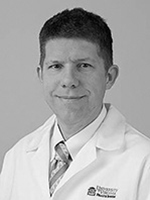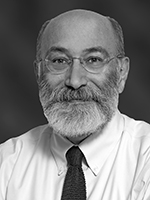The AABB website is currently experiencing technical issues related to login and SSO. Thank you for your patience as we work to get this resolved. If you need immediate assistance, please contact us.
 The AABB Foundation introduced the Hall of Fame in 2007, recognizing a prestigious and select group of Foundation grant recipients who leveraged their early-career grant
funding into successful careers in transfusion medicine or biotherapies and who demonstrated exemplary leadership within the field.
The AABB Foundation introduced the Hall of Fame in 2007, recognizing a prestigious and select group of Foundation grant recipients who leveraged their early-career grant
funding into successful careers in transfusion medicine or biotherapies and who demonstrated exemplary leadership within the field.
The Hall of Fame was reinstated in 2015 as an annual recognition, inducting one to three new members each year that meet the following criteria:


Associate Professor of Pathology
Medical Director of Cell Therapy Collections and Processing
University of Virginia School of Medicine
“AABB Foundation funding provided invaluable opportunities for me to interact with like-minded clinicians and scientists in the field. My AABB Foundation funded project contributed to our basic understanding of how stem cells make decisions and differentiate into mature cells. Working with talented colleagues, we were able to describe a positive feedback loop in which the regulation of alternative splicing alters key epigenetic modifiers and drives cellular differentiation. Additionally, the connections I made through the AABB Foundation have not only led to a host of fruitful scientific collaborations supported by the NIH, but more importantly provided some of my closest friends.”
Grant Year: 2010
Research Project Title:
“Directed differentiation of embryonic stem cells by regulated caspase9 cleavage of zona-occludens2”
Grant Led To: A better understanding of how alternative splicing can regulate key cell fate decisions early on in embryogenesis.
sbb.jpg?sfvrsn=681623c2_1)
Retired
Professor of Medicine
Scientific Director, Cell Therapy and Regenerative Medicine
University of Utah
“My AABB foundation award was an important source of encouragement to me as a junior investigator. This award helped to boost my confidence in my research strategy and also played a role in facilitating my transition into other areas of cellular therapies.”
Grant Year: 2000
Research Project Title:
“Ex Vivo Expansion of Human Umbilical Cord Blood Hematopoietic Progenitor Cells: Evaluation of their Function in a Mouse Transplant Model”
Grant Led To: The formulation of a 2-step manufacturing approach. This process entailed maximizing the in vitro production of megakaryocytes from umbilical cord blood CD34+ cells and then generating platelets in a second bioreactor.

Professor of Biochemistry and Molecular Genetics
Director, University of Colorado School of Medicine Metabolomics Core
Director, Mass Spectrometry Shared Resource - Colorado Cancer Center
Department of Biochemistry & Molecular Genetics;
Department of Medicine - Division of Hematology
University of Colorado – Anschutz Medical Campus
“As a result of the successful Early Career award I received from the AABB Foundation, I had a chance to accumulate sufficient preliminary data to apply for and be awarded an Early Career Grant – Webb-Waring award (2017) sponsored by the Boettcher Foundation. I was also granted multiple promotions at the University of Colorado and have continued to grow my research lab.”
Grant Year: 2016
Research Project Title:
“The role of adenosine signaling in the preservation of energy metabolism of stored erythrocytes”
Grant Led To: Using an integrated metabolomics, proteomics and functional approach to investigate the
role of adenosine signaling through the ADORA2B/AMPK axis in both mouse red blood cells and human red blood cells during storage.

Adjunct Associate Professor, Yale School of Medicine
Professor of Medicine and Pathology; Chief of Allergy & Immunology; Director of the Center for Human Immunobiology, Northwestern University Feinberg School of Medicine
Roy and Elaine Patterson
Professor of Medicine, Northwestern University
“Funding from the AABB Foundation enabled my lab to identify a subset of conventional dendritic cells (DCs) in the spleen that induces CD4+ T cell priming to RBC-derived alloantigens and identify how these DCs could be activated through innate immune receptors during transfusion. This has important implications for preventing a potentially harmful consequence of transfusion, in particular in patients requiring lifelong RBC support such as those with sickle cell disease.”
Grant Year: 2012
Research Project Title:
“Identifying Innate Immune System Pathways Critical for RBC Alloimmunization”
Grant Led To: Identifying a subset of conventional dendritic cells (DCs) in the spleen that induces CD4+ T cell priming to
RBC-derived alloantigens and identify how these DCs could be activated through innate immune receptors during transfusion. This has important implications for preventing a potentially harmful consequence of transfusion, in particular in patients
requiring lifelong RBC support such as those with sickle cell disease.

Assistant Professor, Columbia University, Department of Pathology & Cell Biology
“The AABB Foundation grant ignited my career, boosting confidence as an early investigator, and funding essential research. Its support paved the way for a successful R01, leading to new discoveries in tolerance to RBC autoantigens.”
Grant Year: 2014
Research Project Title:
“Establishment and maintenance of lymphocyte tolerance to red blood cell antigens”
Grant Led To: The discovery of a 3-week tolerization window for RBC autoreactive T cells and identified a new T cell subset that predicts tolerance failure; these findings provided key insights into new therapeutic targets for AIHA treatment.

Co-founder, President & Chief Science Officer - Retham Technologies
Senior Associate Consultant - Division of Hematopathology and Division of Transfusion Medicine
Associate Professor of Laboratory Medicine and Pathology
Teaching/Examining
Privileges in Clinical & Translational Science
Graduate School of Biomedical Sciences, Mayo Clinic College of Medicine and Science
“AABB Foundation funding, my first extramural grant, was critical in jump-starting my research in the field of platelet immunology, and provided funding to help support subsequent federal research grant application that were critical for my academic growth.”
Grant Year: 2012
Research Project Title:
“Role of IgA and IgM Immunoglobulins in Heparin-Induced Thrombocytopenia and Thrombosis (HIT)”
Grant Led To: Key advances in our understanding of how HIT antibodies activate platelets.

Deputy Dean for Clinical and Translational Research
Co-Director, Yale Center for Clinical Investigation
Professor and Chair of Laboratory Medicine
Professor of Biomedical Engineering, Int Medicine, Pediatrics
Yale University School
of Medicine
“The AABB Foundation was instrumental in moving my research focus to translational projects designed to positively impact ameliorating the complications of transfusion and improve cellular therapy. Very importantly, it also provided key opportunities to co-mingle clinician-scientists, clinicians, and non-clinician investigators that encouraged cross-disciplinary collaborations critical to moving Transfusion Medicine forward.”
Grant Year: 1990
Research Project Title:
"Platelet-Leukocyte Interactions"
Grant Led To: Work on the platelet storage lesion that ultimately resulted in several publications of use in improving storage conditions and also to further NIH research funding. In addition, it helped to establish an investigative environment that allowed the successful application of Yale for an NIH pre- and post-doctoral training program in Transfusion Medicine pathobiology which has now been in existence more than 20 years and helped to support many young investigators’ career development.

Professor of Pathology & Laboratory Medicine
Director, Division of Transfusion Medicine & Therapeutic Pathology
Director, Clinical Cell & Vaccine Production Facility
Director, Fellowship Program in Transfusion Medicine
Perelman School of Medicine, University of Pennsylvania
“The AABB Foundation funding provided me with the support necessary to be “retooled” in state-of-the-art laboratory methods that had developed after my time in graduate school during my subsequent years of medical training. I was then positioned to address scientific problems known to exist at the start of my career — but most importantly was prepared for what unexpectedly came along years later such as the opportunity to “hack” the immune system and create engineered T cells.”
Grant Year: 1991
Research Project Title:
“Biology of Human Warm Autoimmune Hemolytic Anemia”
Grant Led To: The development of new approaches for cloning recombinant antibodies relevant to transfusion medicine. This then facilitated the study
of human immune responses to red cell antigens from transfusion; to characterize autoantibody repertoires responsible for disorders such as ITP, TTP, and pemphigus; and to create novel antigen binding domains needed for the design of T cell chimeric
antigen receptors and other targeted therapies.

Senior Director, Diagnostic Hematology
Director, Platelet & Neutrophil Immunology Lab
Senior Investigator, Blood Research Institute
Versiti, Wisconsin
“The AABB Foundation funding helped finance my early research studies that led to publications, name recognition in the field, and a cascade of career advancing opportunities.”
Grant Year: 1995
Research Project Title:
“Role of ABO Blood Group Incompatibility in the Pathogenesis of Neonatal Alloimmune Thrombocytopenic Purpura”
Grant Led To: Practical methods for detecting high expression of A and B antigens on the platelets
of certain individuals and sparked the development of methods for rare antigen determination. Such testing is today combined with other test results to aid in the diagnosis of difficult cases of fetal and neonatal alloimmune thrombocytopenia.

Head, Blood-Borne Parasites
Lindsley Kimball Research Institute
New York Blood Center
“Being recognized as an AABB Foundation awardee supported my laboratory both financially and professionally. Not only did the grant monies focus my work on parasite biology in a translational research direction but also allowed me to forge strong connections with a collaborative network of transfusion medicine researchers.”
Grant Year: 2007
Research Project Title:
“Role of Red Cell Glycophorins in the Invasion of Babesia Divergens”
Grant Led To: Fruitful collaborations with industry partners resulting in the development of diagnostic and blood screening assays,
in addition to serving as a testing platform for pathogen inactivation strategies.

Associate Professor
Department of Pathology and Cell Biology
Columbia University Medical Center
and New York Presbyterian Hospital
“The AABB Foundation award was a critical source of funding at a critical time in my early investigative career. It allowed me to generate the data needed to jump start my extramurally funded research program.”
Grant Year: 2011
Research Project Title:
“Effect of Repeat Blood Donation on Atherosclerosis and Cancer Risk in Murine Models”
Grant Led To: A series of investigations culminating in a current double-blind, randomized, clinical trial examining
the effects of donor iron deficiency on red blood cell recovery, wellbeing, and neurocognition.

Medical Director, Center for Apheresis
Brigham and Women’s Hospital
Associate Director, National Center for Functional Glycomics
Harvard Medical School
“The AABB Foundation grant was the first grant I had written or received. It came at a critical time in my career when I was determining whether it was tenable to choose a career as a physician-scientist in transfusion medicine and in so doing, had a significant impact on my career.”
Grant Year: 2013
Research Project Title:
“Characterization of Immunity and Tolerance Following RBC Transfusion”
Grant Led To: New insight into donor and recipient factors that influence the likelihood someone will generate alloantibodies following
red blood cell transfusion. This work set the foundation for a variety of studies that have naturally extended from this early work that seek to continue defining key factors that influence the development and consequences of red blood cell alloimmunization.

Professor of Pathology and Laboratory Medicine
Director, Blood Bank/Transfusion Medicine
University of Rochester Medical Center
“The AABB Foundation funding in 1989 was one of my first extramural grants. It provided validation of our work on transfusion immumomodulation and post-operative infections, which has been central to my career. These Foundation studies provided data suggesting that avoiding allogeneic transfusions of red cells improved clinical outcomes.”
Grant Year: 1989
Research Project Title:
“Comparison of the Clinical and Immunologic Effects of Autologous or Homologous Blood Transfusions in Patients Undergoing Spinal Fusion Surgery”
Grant Led To: Confirmation of our previous finding in hip
replacement surgery that receipt of any allogeneic red cells was associated with dose dependent increases in post-operative infection, fever, days of antibiotics and length of stay. In contrast, autologous transfusions at any dose were not associated
with increased post-operative infections, fevers, or length of stay, suggesting that the effects of allogeneic transfusion on post-operative infection were causal and immunologic.

Vice President, Research and Scientific Programs
Director, Epidemiology and Health Policy Science
Vitalant Research Institute
Adjunct Professor, Laboratory Medicine
University of California San Francisco
“The AABB Foundation funding literally launched my extramurally funded research career, showing me I could successfully obtain grant funding.”
Grant Year: 2005
Research Project Title:
“Retrospective Cohort Analysis of Return Behavior in Temporarily Deferred and Eligible Voluntary Blood Donors”
Grant Led To: Providing insights into the consequences of blood donor selection policies
on donor behavior during a time when we must re-focus our efforts on a new generation who will donate blood to meet the supply needs of transfusion recipients.

Deputy Director, Marcus Center for Cellular Cures
Professor of Pathology
Duke University
AABB Past President
“Receiving AABB Foundation funding was a critical step in my academic career. Through the process I learned how to write a grant, how to successfully and systematically perform studies and publish their results, and about blood donation. I am thankful for the funding support.”
Grant Year: 2005
Research Project Title:
“Blood Donation Considerations in African Americans”
Grant Led To: An improved understanding of blood donation rates, deferral rates, motivators and barriers in African American versus white individuals.

Provost
Rutgers Biomedical Health Science, New Brunswick
Distinguished Professor of Medicine,
Richard C. Reynolds, M.D., Chair, General Internal Medicine
Rutgers Robert Wood Johnson Medical School
“The AABB Foundation funding was one of the first national competitive peer reviewed research grants that I was awarded, and it contributed significantly to establishing me as an independent investigator in transfusion medicine.”
Grant Year: 1993
Research Project Title:
“Cost Effectiveness of Autologous Blood Transfusion”
Grant Led To: An evaluation of the cost effectiveness of autologous transfusion and demonstrated that it would not be cost effective unless risk of
bacterial infection associated with transfusion was elevated.

Chief, Division of Transfusion Medicine
The Children’s Hospital of Philadelphia
Associate Professor, Pediatrics
Perelman School of Medicine at the University of Pennsylvania
“I feel tremendous gratitude for the AABB Foundation grant which provided critical support during my early career in transfusion medicine which was essential for establishing my research laboratory and translational program to improve transfusion therapy for patients with sickle cell disease.”
Grant Year: 2013
Research Project Title:
“Red Blood Cell Generation from Human Induced Pluripotent Stem Cells: A New Tool for Transfusion Medicine”
Grant Led To: A project generating novel red blood cell reagents from induced pluripotent stem
cells engineered to express combinations of blood group antigens that are rare or never found. We anticipate that these customized induced pluripotent stem cell-derived red cells will be a product on the shelves of blood banks and will allow rapid
identification of antibodies common among patients with sickle cell disease leading to quicker, more efficient matching of blood.

Anthony N. Brady Professor, Departments of Laboratory Medicine, Cell Biology and Pathology
Associate Director
Yale Stem Cell Center
Medical Director
Clinical Cell Processing Laboratory
Yale University School of Medicine
“The research award that I received from the AABB Foundation was very important to me and came at a critical time early in my career. The ability to receive funding and the amount of money received were both key in my now having uninterrupted NIH funding and multiple exciting discoveries on the transcriptional regulation of early hematopoiesis.”
Grant Year: 1997
Research Project Title:
“Regulation of CD34 Expression During Hematopoiesis”
Grant Led To: Discoveries regarding the basic mechanisms underlying transcriptional regulation in hematopoietic stem and progenitor cells. Now with
improved technologies including high throughput assays, single cell assays and long-term time-lapse microscopy, we perform multicomponent studies interweaving cell biology, transcriptional regulation, and epigenetic regulation. The discoveries
we make today may lead to improved therapeutic strategies for promoting platelet and red blood cell production in vitro and/or in vivo.

Professor & Director/Chairman
Hoxworth Blood Center
Leader, Stem Cell Group and Translational Core Laboratories
Director, Translational Core Laboratories
Cincinnati Children’s Hospital Medical Center
University of Cincinnati College of Medicine
“The AABB Foundation was a crucial step in my career since it provided me with the first source of extramural funding to support my research project in 2005. As a result, I was able to generate data that cemented the fundamentals of my research endeavors.”
Grant Year: 2005
Research Project Title:
“Mobilization of Hematopoietic Stem Cells by Reversible Inhibition of Rac-Type Rho GTPases: Demonstration of Proof-of-Concept for Future Clinical Applications”
Grant Led To: An understanding of the cellular
and molecular mechanisms of stem cell mobilization mediated by intracellular signaling through small GTPases and the development of new approaches to manipulate stem cells for cell/gene therapy approaches.

Professor, Department of Pathology
Associate Medical Director of Transfusion Medicine
Medical Director for the Cellular Therapy and Immunohematology Reference Laboratories
University of Michigan
“The AABB Foundation was an important step in my early career as a young faculty member transitioning into academic medicine. It provided a foundation for subsequent clinical and translation studies during my career in the areas of immunohematology and bone marrow transplantation support.”
Grant Year: 2003
Research Project Title:
“Molecular Analysis of Globo- and Lacto-Family Glycosyltransferases: Molecular Etiology of the
LKE-Negative and LKE-Weak Phenotypes”
Grant Led To: Subsequent clinical and translation studies in the areas of immunohematology and bone marrow transplantation support.

Medical Director, Transfusion Medicine Services
Chief, Division of Laboratory Medicine, and Professor Department of Pathology
University of Virginia
“The AABB Foundation was the very first grant for my nascent research lab as an independent Principal Investigator and was instrumental in launching our early research efforts focusing on cytokines in transfusion biology, tolerance, and autoimmunity. The Foundation holds a special place in my heart.”
Grant Year: 2000
Research Project Title:
“T Cell Cytokine Secretion in a Murine Model of Transfusion-associated ImmunoModulation (TRIM)”
Grant Led To: Basic observations about the effects of transfusion and the cytokine TGF-beta on T helper cell
subset development.

Professor of Pathology and Laboratory Medicine
Emory University School of Medicine
Adjunct Professor of Laboratory Medicine
Yale University School of Medicine
“Early career funding by the AABB Foundation was instrumental in allowing me the time and resources to develop my red blood alloimmunization research ideas. This grant also provided me with confidence that my research ideas were worthy of exploration.”
Grant Year: 2006
Research Project Title:
“Effect of Host Inflammation on Alloimmunization to RBC Transfusion”
Grant Led To: A better understanding of the impact of the inflammatory status of transfusion recipients on RBC alloantibody formation.
Inflammation has since been found in other animal models and in humans to be an important factor in determining whether recipients will be “responders” (and form alloantibodies) or “non-responders” to antigens on transfused
RBCs.

Executive Vice-Chair of Laboratory Medicine and Professor
Department of Pathology & Cell Biology
Columbia University
“I received an AABB Foundation grant soon after arriving at Columbia University. I had decided to take the risky step of radically changing my research focus to use mouse models to study poorly understood issues in transfusion medicine, such as the mechanisms underlying hemolytic transfusion reactions. This funding was critically important in allowing us to change our focus and succeed in a new area.”
Grant Year: 2003
Research Project Title:
“Hemolytic Transfusion Reactions: A Transgenic Mouse Model”
Grant Led To: The development of mouse models of acute and delayed HTRs that mimic the complications seen in humans following a blood transfusion.

Executive Director of Research
Lindsley F. Kimball Research Institute
New York Blood Center
“The AABB Foundation grant support allowed me to pursue a new exciting research direction in transfusion medicine and to secure my first R01 and American Heart Association grants. I am forever grateful to the AABB Foundation for providing me with the crucial support to jumpstart my career in transfusion medicine.”
Grant Year: 2000
Research Project Title:
“Recombinant Antigens as Tools for Identification of Alloantibodies in Patients’ Sera”
Grant Led To: An understanding that specific CR1 derivatives can act as anti-hemolytic agents to inhibit red
cell hemolysis both in the test tube as well as in small animal models.

Affiliated Investigator
Vitalant Research Institute, Denver, Colorado
Clinical Professor
University of Colorado School of Medicine, Aurora, Colorado
“The AABB Foundation funding was central to completion of my PhD and has been a key in transitioning to an academic focus that provides a strong bridge between product development, academic research, education and delivery of clinical care. This has strengthened my contributions to the safe and efficacious care of patients.”
Grant Year: 2002
Research Project Title:
“Human Cytomegalovirus (HCMV) Reactivation – Human Exposure Model and Mechanism D”
Grant Led To: The ability to transition to an academic focus that provided a strong bridge between product development,
academic research, education, and delivery of clinical care.

Associate Professor
Division Hematology & Transfusion Medicine
Department of Laboratory Medicine
Technical Director, Immunohematology
Clinical Immunology and Transfusion Medicine
Office of Medical Services
Lund University
“My AABB Foundation grant permitted me to establish myself in a new country and gave stability to my post-doctoral employment. Those early results led to further funding from other local sources, and to the discovery of a novel erythrocyte protein. AABB Foundation grants are an enormously important source of research funding in Transfusion Medicine and Cellular Therapy.”
Grant Year: 2006
Research Project Title:
“Characterization of the Vel Blood Group System”
Grant Led To: Identifying the SMIM1 protein on the red blood cell membrane and confirming its absence or presence in red blood cells from Vel-negative
and Vel-positive donors, respectively.

Professor, Pathology
University of Virginia
“My AABB Foundation award came at a crucial time, early in my career, when it was unclear in what direction my lab would develop. The support was indispensable in allowing me to develop a mature research program, focused on transfusion biology, which has been the basis of my research career.”
Grant Year: 2004
Research Project Title:
“Selective Induction of Allotolerance in Bone Marrow Transplantation”
Grant Led To: The development of a new generation of animal models, allowing the investigation of processes involved in alloimmunization
to RBC and platelet transfusion which are now being widely used by multiple investigators in the field.

Grant Year: 1985
Research Project Title:
“Use of Indium111 as a Red Cell Label in Survival Studies”
Grant Led To: Advances in platelet storage research that are in practical use today.

Director Emeritus
Vitalant Research Institute
Vice President for Research and Scientific Programs
Vitalant
Professor of Laboratory Medicine
University of California San Francisco
President
of the International Society of Blood Transfusions (ISBT)
“Although an investigator on grants prior to my AABB Foundation grant in 1992, this was my first PI-status grant. The grant led to a publication in Blood and development of the Viral Activation in Transfusion Study. Over the subsequent decades I have led dozens of similar studies with Vitalant Research Institute as the Central Laboratory.”
Grant Year: 1992
Research Project Title:
“Impact of Homologous Blood Transfusion on HIV Replication and Disease in Vivo”
Grant Led To: A large NIH contract to study viral activation by transfusions in HIV infected patients.

Co-Director, Blood Transfusion Service
Massachusetts General Hospital
“Participation in the AABB Foundation— as an applicant, an awardee, a reviewer of grant applications, and as a financial contributor—has built strong and positive relationships during my career in academic transfusion medicine. I look at recent and current AABB Foundation awardees and I am extremely proud of their scientific achievements and their investigative enthusiasm. The AABB Foundation is one of the best parts of our Profession.”
Grant Year: 1994
Research Project Title:
“Transient Microchimerism Following Allogeneic Blood Transfusion”
Grant Led To: Developing a new process for in-line leukoreduction and cell counting methods that demonstrated the effectiveness of the
new technology.

President and CEO
New York Blood Center
Professor, Department of Medicine
Weill Cornell Medical College
AABB Past President
“The value of the AABB Foundation grant to me was substantial. It was seed funding at a point in my career when I would not have been able to get major, investigator-initiated grants. It was peer reviewed at a very good and high level, allowing me to learn the process. These set the stage for me to get R01 and even P01- level funding. Through the AABB Foundation grant process, I was also able to meet other investigators and network in a way that supported my career development.”
Grant Year: 1991
Research Project Title:
“Peripheral Blood Stem Cells for Allogeneic Transplantation: Development of an Animal Model-Initial Phase Investigations”
Grant Led To: An animal model that defined large volume leukapheresis.

Senior Vice President and Chief Medical Officer
Verax Biomedical Inc.
AABB Past President
“The AABB Foundation grant I received played a key role in the transfusion medicine research program at the University of Virginia and in my career development. This award allowed us to study the relationship of platelet morphology to platelet recovery and survival and to learn the techniques required to radiolabel platelets and to perform these studies. We subsequently applied this knowledge to other research.”
Grant Year: 1986
Research Project Title:
“Correlation of Non-invasive Assessment of Platelet Morphology with Platelet Recovery and Survival”
Grant Led To: Confirming the reversibility of the platelet shape change during storage and that the
percent of discoid platelets was not predictive of post-transfusion platelet recovery or survival.

Retired
Former Scientific Director
Immunohematology Center
Grifols Diagnostic Solutions Inc.
“My AABB Foundation grant allowed me to obtain the experience with molecular techniques as applied to blood groups that I needed to become a leader in the field of molecular immunohematology and become an advocate for the use of blood group genotyping in patient care.”
Grant Year: 1992
Research Project Title:
“Determination and Localization of Human Blood Group Polymorphisms on Complement Receptor One (CR1)”
Grant Led To: The identification of the molecular mechanism for the Knops blood group antigens and
the development of methods for genotyping.

Former Senior Director
National Laboratories for American Red Cross and American Rare Donor Program
Past Editor-In-Chief
Immunohematology Journal of Blood Group
Serology and Molecular Genetics
Former
Adjunct Assistant Professor,
Division of Transfusion Medicine and Therapeutic Pathology
University of Pennsylvania
“The AABB Foundation grant was the first grant I applied for and received which led to a subsequent publication reporting use of the Monocyte Monolayer Assay. These early research years as a PI on the Foundation grant were formative and laid the foundation for my continuing research, presentations, publications, and review roles. It reinforced the importance of learning and teaching others. Receiving a Foundation grant, becoming a Scholar, and an inaugural inductee to the Hall of Fame are a continuing source of pride, along with having the MMA be used to predict transfused RBC survival of incompatible red blood cells over 35 years later.”
Grant Year: 1989
Research Project Title:
“A Comparison of the Efficiency of the Monocyte Monolayer Assay IgG Subclassing, OD450 Amniotic Fluid, and Ultrasonography in Prediction of the Severity of Hemolytic Disease of the Newborn”
Grant Led To:
Enabling a more comprehensive evaluation of prenatal cases to yield conclusive results for clinical recommendations showing that these tests should be used as one of a battery of tests for diagnosis.

Grant Year: 1993
Research Project Title:
“Studies on the Surface Markets of Glycophorin in Molecules in Human Red Blood Cells”
Grant Led To: A large NIH grant which further advanced the study of these important blood groups.

Professor, Department of Pathology and Laboratory Medicine
Emory University School of Medicine
Director, Center for Transfusion and Cellular Therapy Department of Pathology and Laboratory Medicine
Emory University School of Medicine
Medical Director, Blood Bank
Emory University Hospital
“Although I received an AABB Foundation grant in 1998, when NIH funding was relatively abundant, the award was absolutely critical for jump-starting my transfusion medicine research career and laying the groundwork for my later investigations. In today’s more challenging NIH funding climate, the AABB Foundation awards are more important than ever for developing the next generation of transfusion medicine investigators.”
Grant Year: 1998
Research Project Title:
“The Role of Leukocytes in Transfusion-Transmitted Cytomegalovirus (TT-CMV) Infection: Development of an Animal Model”
Grant Led To: Establishing a powerful mouse model to study TT-CMV infection and
disease, and to conduct further research in this area.

Professor of Pediatrics and Surgery
School of Medicine
University of Colorado Denver
Associate Director HOB Fellowship
Head Clinical Competency Committee
Professor
Senior Independent Investigator
Children’s Hospital Colorado
“The AABB Foundation was the first organization to take my data seriously and gave me working capital when no one else would. This has led to consistent extramural funding and a rewarding clinical and research career. I will be forever indebted.”
Grant Year: 1998
Research Project Title:
“The Pathophysiology of Transfusion Related Acute Lung Injury (TRALI) in an Animal Model and In Vitro Investigation of Endothelium as an Active Participant”
Grant Led To: The development of an alternate
pathophysiology and two-event model, which the latter is now generally accepted throughout the industry.

Professor Laboratory Medicine and Pathology
Yale Medical School
Chair, Yale COI Committee, Vice-Chair, DSMB
Yale Cancer Center
Attending, Blood Bank YNHH, Director
Blood Bank Bridgeport Hospital
Co-Director Tissue Programs -Yale-New Haven & Bridgeport
Yale-New Haven Hospital
AABB Past President
“The AABB Foundation provided me with funding to start my research in the field of blood filtration. That seed grant grew into a major research effort that afforded me the opportunity to publish papers, participate in local and national research symposia and be recognized as a useful committee member and advisor to National Organizations and Federal Agencies. That small grant of $5,200 paid large dividends and formed the foundation of my career in Transfusion Medicine.”
Grant Year: 1986
Research Project Title:
“Calcium-Dependent Proteolysis of Actin During Storage of Platelet Concentrates”
Grant Led To: Using two-dimensional gel electrophoretic techniques that today are part of the field of proteomics to examine
the basis of the platelet storage lesion.

Executive Scientific Director of Immunohematology and Genomics
New York Blood Center
“The AABB Foundation grant brought my research career back to my first love — the field of transfusion medicine — and the chance to contribute to improve transfusion therapy through genomics.”
Grant Year: 1999
Research Project Title:
“Deciphering the Function of the Rh Proteins”
Grant Led To: The discovery that the Rh family of proteins were ammonia transporters, the first to be found in mammals, changing the paradigm of ammonia transport
in human physiology.

AABB is now the Association for the Advancement of Blood & Biotherapies. Learn more about our new name and brand – and watch as we evolve throughout 2022.
4550 Montgomery Avenue
Suite 700, North Tower
Bethesda, MD 20814
301.907.6977
AABB (Association for the Advancement of Blood & Biotherapies) is an international, not-for-profit organization representing individuals and institutions involved in the fields of transfusion medicine and biotherapies. The Association works collaboratively to advance the field through the development and delivery of standards, accreditation and education programs. AABB is dedicated to its mission of improving lives by making transfusion medicine and biotherapies safe, available and effective worldwide.
©2022 All Rights Reserved. AABB - Association for the Advancement of Blood & Biotherapies
Web Design and Development by Matrix Group International, Inc.